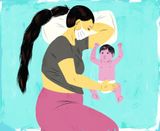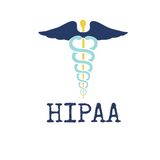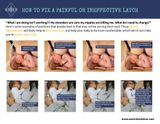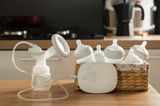This pandemic is an ever evolving situation. This is the most up to date information at the time of publishing this article.
If you are interested to help scientists learn more about how COVID affects parents postpartum, join this study.
Human milk helps keep your baby safe
Lots of the official advice and scientific positions regarding breastmilk during the corona outbreak argue that the benefits outweigh any risks from any additional contact involved. Human milk has been known for decades to help babies fight off viruses and infections and this one is likely no different.[1]
Nursing mothers who are infected with the novel coronavirus should continue to breastfeed throughout their COVID-19 illness and beyond, because (other researchers) have shown transmission does not occur via milk, and we have determined that antibodies are almost certainly there, and may protect their babies from infection.[2]
Even in the case of a confirmed case of COVID, the World Health Organization, Centers for Disease Control and Prevention, and Academy of Breastfeeding Medicine all agree that babies should continue to be fed human milk.
WHO recommends that mothers with suspected or confirmed COVID-19 should be encouraged to initiate or continue to breastfeed. Mothers should be counselled that the benefits of breastfeeding substantially outweigh the potential risks for transmission.
Mother and infant should be enabled to remain together while rooming-in throughout the day and night and to practice skin-to-skin contact, including kangaroo mother care, especially immediately after birth and during establishment of breastfeeding, whether they or their infants have suspected or confirmed COVID-19.[3]
If you're breastfeeding or planning to breastfeed during this time, there are some easy recommendations for keeping your baby safe if you have COVID.
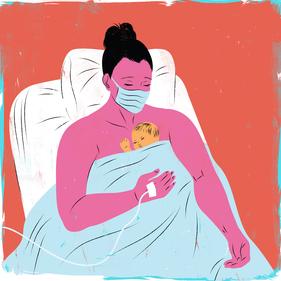
How to feed safely with COVID
Feeding and snuggling
- Wash hands using soap and water before you pick up your baby
- If handwashing isn't possible, use hand sanitizer (at least 60% alcohol)
- Wear a cloth face mask
Hand expressing or pumping
- Wash hands using soap and water before touching breast/chest or pump parts
- If handwashing isn't possible, use hand sanitizer (at least 60% alcohol)
- Wear a cloth face mask
- Sanitize pump parts between use [4] (here's how to sanitize a breastpump)
Getting lactation support safely
I have moved all lactation consultantions to remote visits for the safety of my clients and my family, which, besides mitigating any risk of transmission. Find out more about how this works here:
"How Breast Milk Protects Newborns", https://kellymom.com/pregnancy/bf-prep/how_breastmilk_protects_newborns/ ↩︎
Rebecca Powell of The Icahn School of Medicine at Mount Sinai in New York, who led the study: https://www.medrxiv.org/content/10.1101/2020.05.04.20089995v1 ↩︎
"Breastfeeding and COVID-19", WHO Scientific Brief: https://www.who.int/news-room/commentaries/detail/breastfeeding-and-covid-19 ↩︎
"Coronavirus Disease (COVID-19) and Breastfeeding", CDC: https://www.cdc.gov/breastfeeding/breastfeeding-special-circumstances/maternal-or-infant-illnesses/covid-19-and-breastfeeding.html ↩︎
